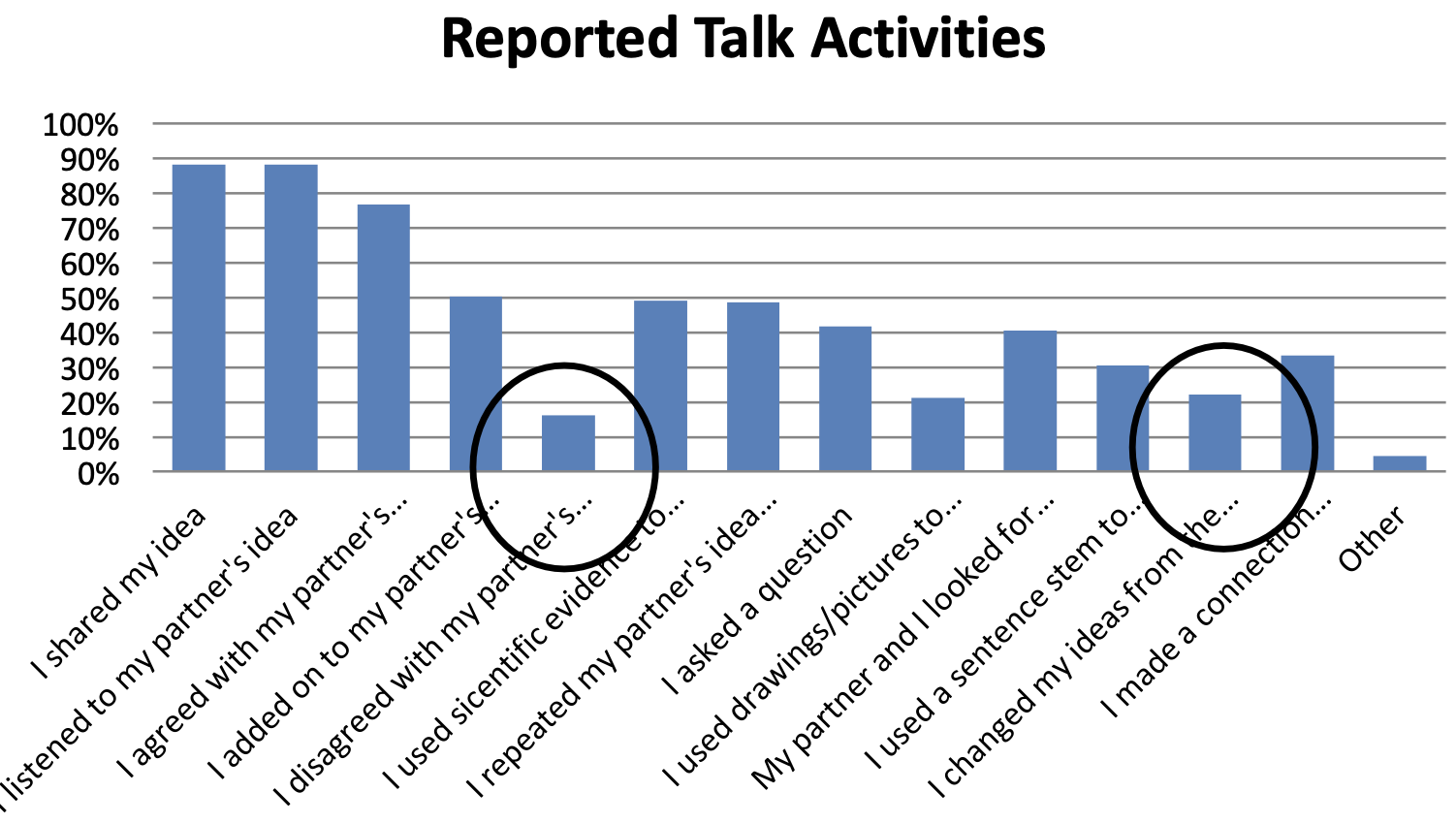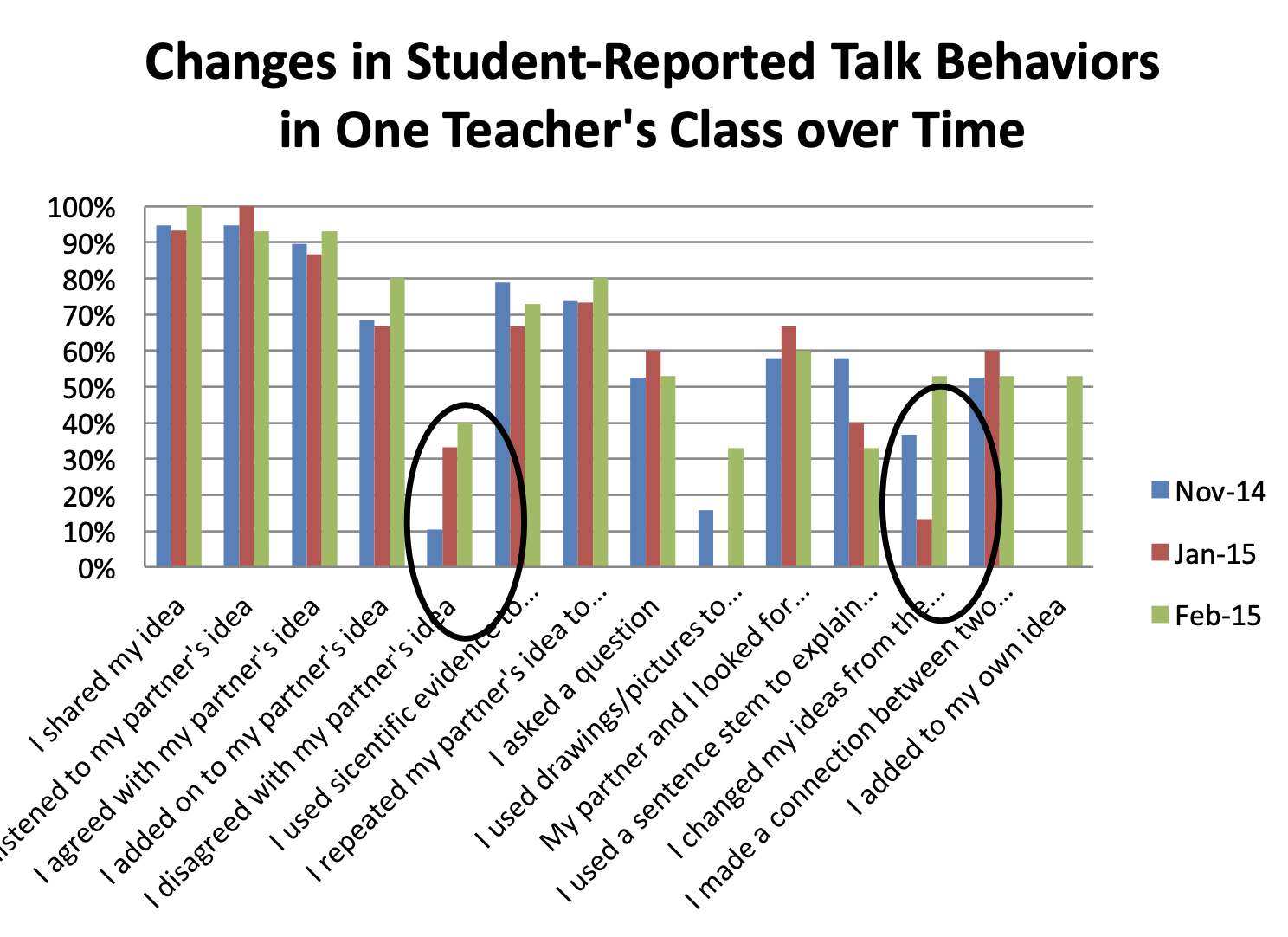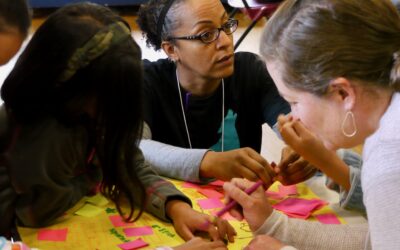Suggested Templates/Downloads
Design Considerations
A generative way to learn and iterate on structured A/B partner talk in the science classroom is to explore the practice through a Plan-Do-Study-Act (PDSA) cycle. This cycle involves several phases and can be done independently, but is often more productive when done collaboratively and repeatedly within a teacher learning community. (See this Carnegie Foundation for the Advancement of Teaching blog post for more on PDSA cycles in general).
| Here, we share a Structured talk data snap tool originally developed by teachers and coaches at Evergreen Campus in Washington State. This tool can ground and document PDSA cycles around structured talk. You can build such cycles into your TE courses or PL opportunities. |
 |
Plan: The tool prompts teachers to plan the purpose, components, and questions for an upcoming partner talk. Teachers can also describe specific instructional changes to the talk opportunity based on what they learned from prior experiences or data.
Do: Teachers then try the planned talk protocol in classrooms and collect data that will help them see if the talk opportunity accomplishes what they intended. The tool includes a table for documenting specific students’ depth of explanation during partner talk — whether students mostly discuss what happened, or start to explain how and/or why something happened. However, this may not be the most informative data for all goals.
Another option could be focusing on students’ interactions, as seen below or in a student exit ticket for structured talk, or mapping the diversity of ideas students raise during partner talk. You may want to make data collection part of the planning phase and support teachers in identifying what data would be most meaningful for gaining insight into their goals for the talk.

Study: In this phase, teachers consider what they have learned from the data and how well the talk served its intended purpose.
Act: Finally, teachers identify what they might try next time to support students and any new questions. This resets the PDSA cycle back to planning and deciding what instructional changes may improve the talk opportunities for their students and goals.
In addition to small instructional changes, you can also invite teachers to think about how structured A/B partner talk may change forms over the course of a year, or how it can serve as an entry point to other practices like peer feedback or structured model share-outs. This adaptability is part of the richness of engaging A/B partner talk as part of a classroom repertoire.
Stories
Improving the Evolution of Thinking Through Partner Talk in High School Science. A high school teacher team began using structured A/B partner talk to support students in sharing and listening to different ideas, but they hoped to deepen the talk and thinking that occurred. They decided to investigate using a student exit ticket (Do), to see what sorts of talk activity students reported engaging in. Data from over 200 students across five teachers showed the following patterns:
 The team saw that disagreeing with a partner’s idea and changing ideas based on the discussion were both infrequently reported (Study). Teachers noted these activities tended to be more socially risky, yet also important for the evolution of thinking through talk. They made several instructional changes to see if they could shift these patterns (Act/Plan). First, teachers coupled partner talk with more intentional writing opportunities, in which students were asked to write if and how their thinking changed after talking with their partner. Teachers also explicitly discussed with their classes how questioning their own and their partner’s ideas was helpful. The graph below shows student-reported talk behaviors from one teacher’s class as these changes were implemented, demonstrating some growth in disagreeing and mixed reports on changing ideas (Do/Study).
The team saw that disagreeing with a partner’s idea and changing ideas based on the discussion were both infrequently reported (Study). Teachers noted these activities tended to be more socially risky, yet also important for the evolution of thinking through talk. They made several instructional changes to see if they could shift these patterns (Act/Plan). First, teachers coupled partner talk with more intentional writing opportunities, in which students were asked to write if and how their thinking changed after talking with their partner. Teachers also explicitly discussed with their classes how questioning their own and their partner’s ideas was helpful. The graph below shows student-reported talk behaviors from one teacher’s class as these changes were implemented, demonstrating some growth in disagreeing and mixed reports on changing ideas (Do/Study).

The team continued tweaking how structured talk was coupled with writing, as well as other ways of supporting the evolution of student thinking.
Related PL Links









 This site is primarily funded by the National Science Foundation (NSF) through Award #1907471 and #1315995
This site is primarily funded by the National Science Foundation (NSF) through Award #1907471 and #1315995